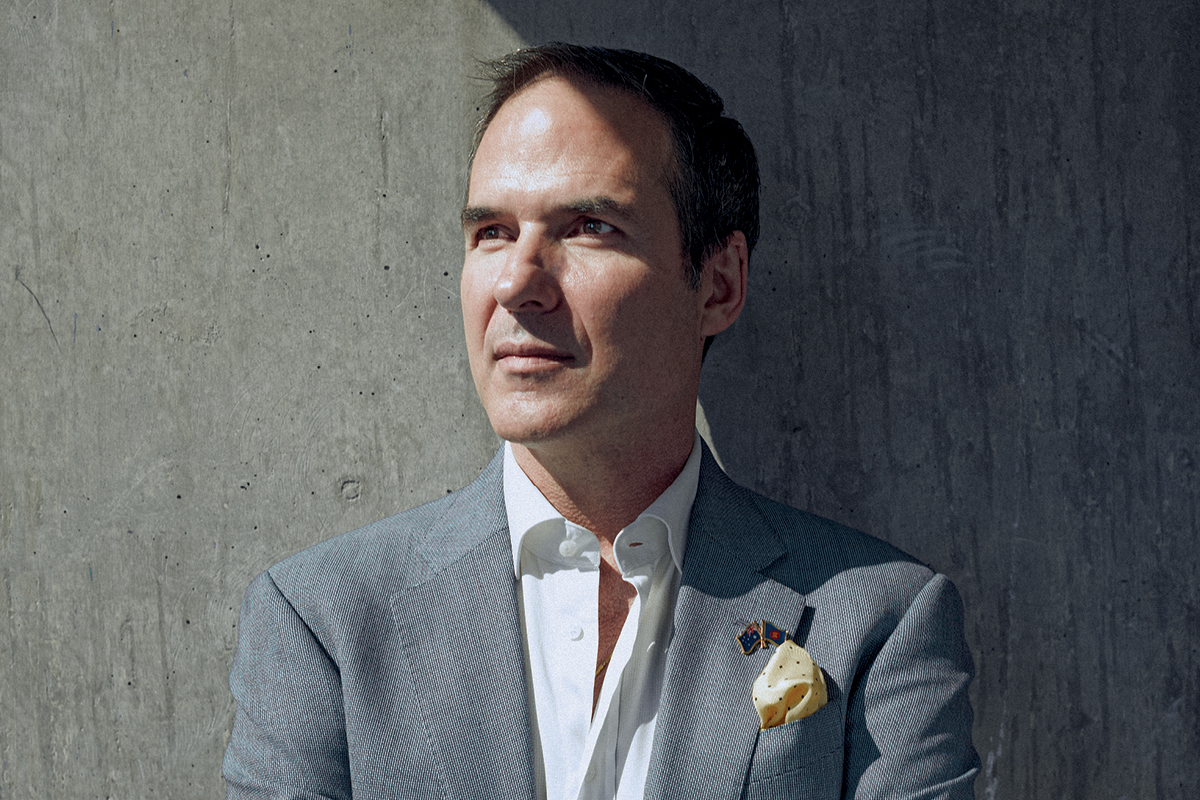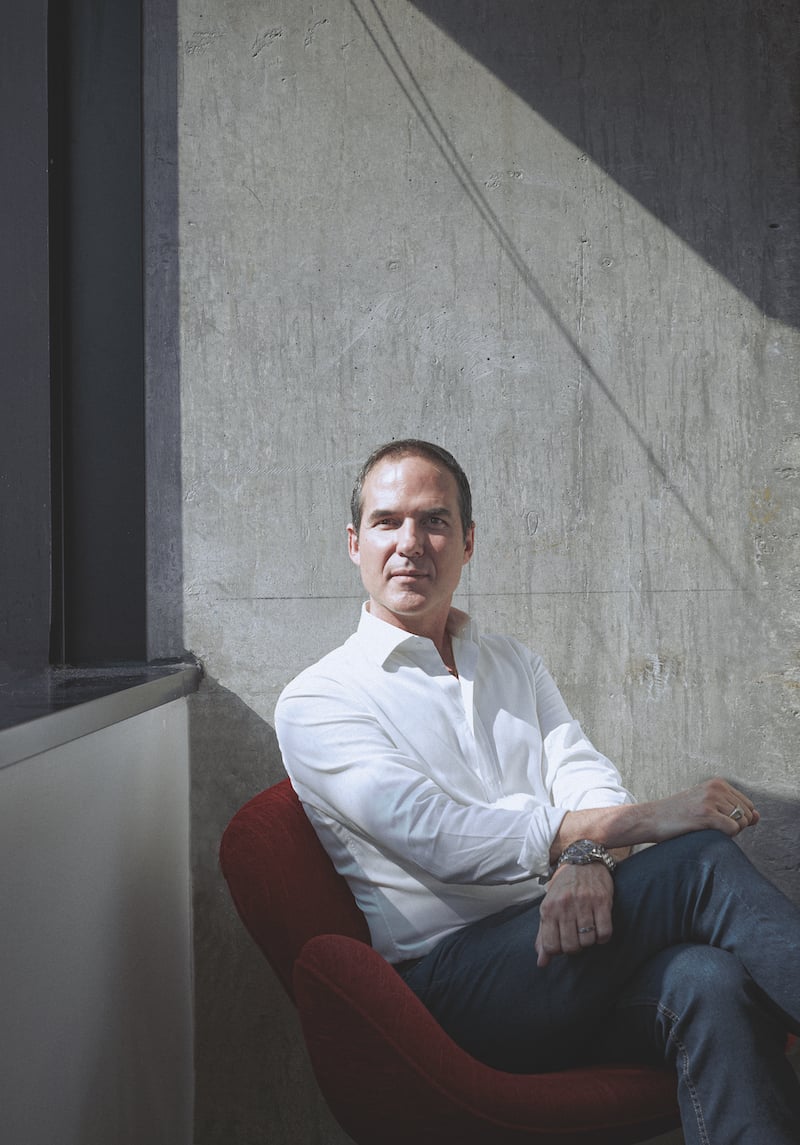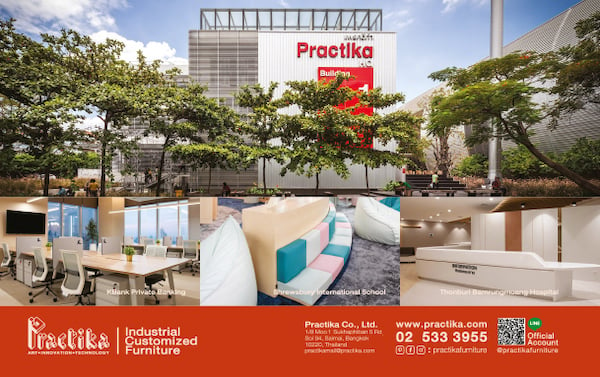Interacting with design is easier for some than others. Many are oblivious to the primary role it plays in every aspect of our lives; others are drawn to it and have visceral reactions to design in its many forms.

Brenton Mauriello is one of the latter. He lives and breathes design as CEO of design worldwide partnership (dwp), a group of companies that have amalgamated to form a single entity seeking to deliver design excellence around the world.
“We have about 350 people in 11 full offices and a few project offices,” he tells The CEO Magazine. “Our head office is in Bangkok; we have very strong operations in Vietnam, Dubai and in Australia across four locations. They’re our key areas. We are also in negotiations with a UK firm right now, with about 30 staff, which is the business size we like.”
Brenton came to dwp through projects he worked on in Bangkok, when the company directors approached him to provide business acumen to the overall group.
“At that stage, it was not one group, it was really just an alliance. After the 1997 crash, the directors received advice from Arthur Andersen to foolproof the company in downturns by creating a brand, setting up systems and bringing in like-minded companies,” he explains.
“In 2001, they brought in four companies. What I achieved was to reposition a series of unconnected design studios to a unified global architecture and design practice, presenting one common brand identity – what we now call dwp. I originally joined the firm because I saw the potential for business expansion and I have an affinity for design and building.
“I saw the opportunity to consolidate a market that was extraordinarily fractured, and it still is because the barriers to entry are very low. The industry has not done well by itself, in architecture, interior design, and design in general. Creatives tend to undervalue what they do and are often willing to discount to secure the project. And I understand why – there’s a financial imperative. But that’s very destabilising to the market for people to operate in, and it undersells creative work.”
Brenton moved to Bangkok from Adelaide 25 years ago, and has since become a Thai citizen. He attributes his move to the “roaring tiger” Asian economies at the time, and was lured by double digit growth figures, the region’s dynamism and its people.
“I was 27. Somebody said, ‘Come and work in Thailand,’ so I said, ‘Why not? Let’s go.’ It was technically for three years, but it just developed. It has its challenges, like everything, but it’s wonderful. It’s provided me, and our company, a great opportunity, and I feel very beholden to Thailand and to South-East Asia in general,” he says.
Having a Thai headquarters brings rewards in the form of a unique ‘calling card’ for the company, and a commercial sensibility not often found elsewhere, giving it an edge in client liaison.
“We want to keep it very entrepreneurial, and our heart is Asian. There aren’t many global Asian firms. We grew up in Vietnam and Thailand, so we’re willing to take those risks. We’re willing to be a bit forward-thinking, a bit entrepreneurial, and our clients love it,” Brenton explains.
“We want to keep it very entrepreneurial, and our heart is Asian.”
Those characteristics are the “heart of our DNA and also our strategy”, he says, in four disciplines – architecture, interior design, master planning and product branding. The company delivers across three portfolios: Lifestyle, Workplace and Community.

“We deliver projects via teams of highly focused specialists, while offering diversity, flexibility and creativity over a broad spectrum of project types including tall buildings; urban design and masterplans; hospitality; residential; retail; commercial workplaces; health and wellbeing; education; sports and leisure; and civic and cultural buildings,” Brenton says.
“Each office has a particular strength and we use that strength locally for a lot of decisions. I would consider us to be in the top three in terms of systematisation – we are completely on the cloud, and run as one company. We are completely transparent – we only work in Revit 3D Model, and don’t have CAD anymore. Everything is digitalised in our company, which enables us to work as one. On my phone, I can pick up any document or presentation, get into my Revit models and work from my phone in a car in Vietnam.”
Dwp’s global locations provide a unique opportunity for input from differing perspectives and cultures, according to Brenton, strengthing the firm’s ability to provide specialist design skills throughout the world.
“We work collectively. The local office takes the lead, but we have ‘design Wednesdays’, when the entire company does design reviews,” he says. “Everybody has access to them on our intranet; everybody can attend the meeting and offer comments about every project.”
Cultural influence in dwp’s different markets plays a role in projects through business interactions with clients. But perhaps surprisingly, Brenton doesn’t think cultural preferences play a significant role in the way the company tackles design initiatives.
“There is some finesse in localisation, and an understanding. The way you deal with people is different,” he points out. “But in terms of design, it’s just good design or bad design. There’s not much in between.
“We have a philosophy within dwp – which is, not saying that it has to look a certain way, but it has to meet certain terms. I get upset about very poor design because it means we have to live with it and it impacts social wellbeing and overall client experience. The client and user experience is the lasting outcome of what we do – design. We want to leave all our clients with a sense of commitment, passion for quality, trust and a desire to work with dwp again.
“I get upset about very poor design because it means we have to live with it and it impacts social wellbeing.”
“You can do a cost-effective building, absolutely. That adds to the streetscape and to the social environment. One of our maxims is everything we do has to be timeless, elegant and simple. We apply that to every design in a design review. I ask that question as a challenge, and that will drive the outcome of projects. It’s not dictating the outcome, but it drives the outcome.”
“Everything we do has to be timeless, elegant and simple.”
Brenton has played an important role in building business links in Asia as a past president of the AustCham Thailand and President of the AustCham ASEAN. He has used these positions to build relationships, foster business and help the countries to grow.
dwp|signature
dwp|signature is a series of collections inspired by collaborations with acclaimed architects, interior designers and artists. Among those with whom dwp has worked in dwp|signature are:
– Jordy Fu
– Anne Carson
– Buzz
– Gary Szillich
– Michael Reeves
– Matthew Campbell Laurenza
– Elegance
But design still holds his heart, and has inspired an initiative called dwp|signature, in which dwp collaborates with distinguished designers in architecture, interior design and art. The results are a revelatory, and bold, move forward for the company, Brenton says. “I can see beauty in a lot of things. I can sit there and just look at it,” he says with a smile.
“Right now, I’m looking at a piece of sculpture created through dwp|signature by Matthew Campbell Laurenza. He’s a famous jeweller, but he happens to do sculptures on the side. I think, one day, we can put these pieces of art into community areas, courtyards and so on.”
The restless creative mind keeps moving on.
Proudly supported by:



